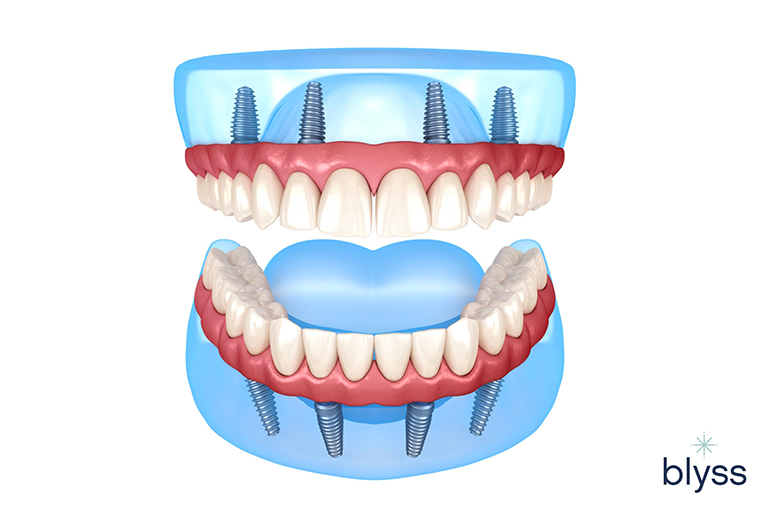Dental Sense Things To Know Before You Get This
Dental Sense Things To Know Before You Get This
Blog Article
The 45-Second Trick For Dental Sense
Table of ContentsRumored Buzz on Dental SenseThe smart Trick of Dental Sense That Nobody is DiscussingThe Dental Sense PDFsWhat Does Dental Sense Mean?
are clinical tools surgically dental implanted into the jaw to restore a person's capacity to chew or their appearance. They offer assistance for synthetic (fake) teeth, such as crowns, bridges, or dentures. When a tooth is lost as a result of injury or illness, an individual can experience issues such as fast bone loss, malfunctioning speech, or changes to chewing patterns that result in pain.Dental implant systems contain an oral implant body and dental implant joint and might also consist of an abutment fixation screw. Front tooth filling. The dental implant body is operatively placed in the jawbone in place of the tooth's origin. The oral implant joint is generally affixed to the implant body by the joint fixation screw and extends through gum tissues into the mouth to support the connected man-made teeth
(https://trello.com/w/dentalsense11/members)Framework of The Dental Implant System picking dental implants, talk to your oral supplier about the potential advantages and threats, and whether you are a prospect for the treatment. Points to take into consideration: Your overall health and wellness is a vital variable in establishing whether you are an excellent prospect for dental implants, for how long it will certainly require to recover, and how much time the implant may stay in place.
Cigarette smoking may impact the recovery procedure and decrease the long-term success of the dental implant. The healing process for the implant body may take several months or longer, throughout which time you usually have a short-term abutment in area of the tooth. the dental implant treatment: Very carefully follow the oral hygiene instructions provided to you by your oral supplier.
Dental Sense Fundamentals Explained
Implant failure can cause the demand for an additional medical procedure to fix or replace the implant system. Restores the capacity to eat Restores aesthetic appearance Assists maintain the jawbone from shrinking because of bone loss Preserves the health and wellness of the surrounding bone and periodontals Helps maintain nearby (neighboring) teeth steady Boosts lifestyle Damage to bordering natural teeth throughout implant placement Injury to the surrounding cells during surgery, such as sinus opening Injury throughout surgical procedure (for instance, crack of surrounding jawbone) Poor function, such as really feeling like the teeth do not attack together normally A sensation that the tooth hangs or turning in position resulting from a joint screw loosening Implant body failure (looseness of the implant body) because of systemic infection, which may be most likely in clients with uncontrolled diabetes mellitus due to neighborhood infection in bone and periodontals sustaining the implant body as a result of delayed recovery, which might be more probable in people who smoke Problem cleansing the gums around the implant, leading to bad oral health Go Here Unattended gum condition Post-surgical numbness as a result of nerve impingement or damage Always notify health care service providers and imaging service technicians that you have dental implants prior to any type of magnetic vibration imaging (MRI) or x-ray procedures.
FDA is not knowledgeable about any type of unfavorable events reported for MRI or x-ray treatments with oral implants. Dental implants systems are normally constructed from materials that follow international consensus criteria of the International Company for Standardization (ISO) or ASTM International. These standards have information of what makes a safe material.

A dental implant is a framework that changes a missing tooth. With screw-like tools, the surgeon inserts a dental implant into the jawbone, and it acts as an anchor for a fabricated tooth, called a crown. A tool called an abutment connects the artificial tooth to the oral implant. The crown is customized to fit the person's mouth and match the shade of their teeth.
Dental Sense Fundamentals Explained
Some individuals are not eligible for dental implant surgical procedure. It is for oral specialists to operate people with: severe illnessuncontrollable metabolic diseasebone or soft cells condition or infectionIf these issues are settled, a person can have the surgical procedure. In, oral surgeons abstain from running on people with: If people with any of the above go through dental implant surgery, there is a higher threat of the dental implant falling short.

Oral dental implant surgery is a tailored process. It's not the exact same for everybody. But the complying with gives a general introduction of what you can expect your dental professional, dental cosmetic surgeon, periodontist or prosthodontist to do: Put the implant surgically. Provide you time to heal. Connect the blog post and last crown, bridge or denture.
Next, your doctor will very carefully put the oral implant right into your jaw. Ultimately, your cosmetic surgeon will rearrange your gums and close the cut with stitches. If your dental implant is near the front of your mouth, your dental practitioner will certainly make a short-lived tooth for you to use up until you recover. By doing this, you won't have a void in your smile while you recuperate.
Facts About Dental Sense Uncovered
Your provider can inform you what to expect in your scenario. During the healing phase, your jawbone must fuse to the oral implant. This process, called osseointegration, is essential for stability and lasting success. This process can take anywhere from 3 to 9 months. Sometimes, it may take much longer.
Once your implant heals, your dental expert can affix the abutment (small connector message) and your last restoration (crown, bridge or denture). This usually takes about one hour to finish and might need a 2nd minor surgical treatment. You shouldn't feel any pain during your oral implant treatment because your copyright will certainly utilize medicine to numb your periodontals.
Report this page